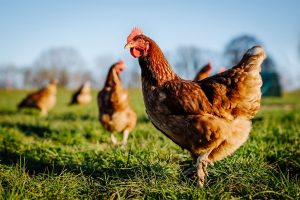
30 interesting facts about guillemots
- 👁️ 1762
Guillemots are a captivating group of seabirds that are closely related to puffins and razorbills. These birds are well adapted to life in the marine environment, spending a significant portion of their life at sea, only coming ashore to breed on cliffs and rocky shores. Guillemots are known for their sleek black-and-white plumage and their incredible diving ability, which allows them to hunt for fish deep underwater. The resilience and unique behaviors of guillemots have intrigued ornithologists and bird watchers alike. Let’s dive into the world of guillemots and discover some fascinating aspects of their life and habits.
- Guillemots belong to the auk family, known scientifically as Alcidae.
- There are two main species of guillemots: the Common Guillemot (Uria aalge) and the Black Guillemot (Cepphus grylle).
- Guillemots can be found in the cold coastal waters of the North Atlantic and Arctic Oceans.
- Unlike many birds, guillemots do not have a brood patch; they incubate their eggs using their feet.
- Guillemots lay their eggs directly on bare rock ledges without constructing a traditional nest.
- Their eggs are uniquely pear-shaped to prevent them from rolling off the cliffs.
- The diet of guillemots primarily consists of fish, but they also eat crustaceans and marine worms.
- Guillemots are excellent divers and can dive deeper than 180 meters (590 feet) in search of food.
- They use both their wings and feet to propel themselves underwater.
- The plumage of the Common Guillemot changes seasonally, from a black and white combination in winter to a more chocolate brown in summer.
- Black Guillemots retain their distinctive black body and white wing patches year-round.
- Guillemots are colonial breeders, often nesting in large, densely packed groups on cliffs.
- The survival of guillemot chicks depends heavily on the availability of food and the absence of predators.
- Guillemots have a high site fidelity, returning to the same breeding sites year after year.
- The life expectancy of guillemots can be up to 20 years in the wild.
- During breeding season, male guillemots perform elaborate displays to attract mates, including wing spreading and calling.
- Guillemot chicks are precocial, meaning they are relatively mature and mobile from the moment of hatching.
- Chicks leave the nest and head to sea only a few weeks after hatching, long before they are capable of flight.
- The “bridled” or ringed form of the Common Guillemot has a white eye-ring and stripe behind the eye, which occurs in a small percentage of the population.
- Guillemots are vulnerable to oil spills and pollution, which can damage their insulating feathers and lead to hypothermia.
- They are also affected by climate change, which impacts their prey availability and breeding success.
- The vocalizations of guillemots include a variety of calls used to communicate over the noise of the breeding colonies.
- Guillemots are preyed upon by larger birds, such as eagles and large gulls, especially the chicks and eggs.
- Research on guillemots has provided important insights into the health of marine ecosystems.
- They are often monitored as indicator species for marine conservation.
- The wing loading (ratio of body weight to wing area) in guillemots is high, making them more suited to diving than flying.
- In winter, guillemots disperse widely along the coast and over the open ocean, often appearing solitary or in small groups.
- Historical hunting and egg collecting significantly reduced guillemot populations in the past.
- Conservation efforts have led to the recovery of some guillemot colonies, though they remain sensitive to environmental changes.
- Guillemots have been featured in the folklore and mythology of coastal communities, symbolizing good luck and connection to the sea.
Guillemots are remarkable birds that demonstrate the incredible adaptability and resilience of seabirds. Their life at sea, remarkable diving skills, and social nature make them a subject of endless fascination and study. Understanding the lives of guillemots helps us appreciate the complexity of marine ecosystems and the importance of preserving them. As indicators of ocean health, protecting guillemots and their habitat is crucial for maintaining biodiversity and ecological balance in our oceans. Their continued survival depends on our commitment to marine conservation and our actions to combat environmental threats such as pollution and climate











